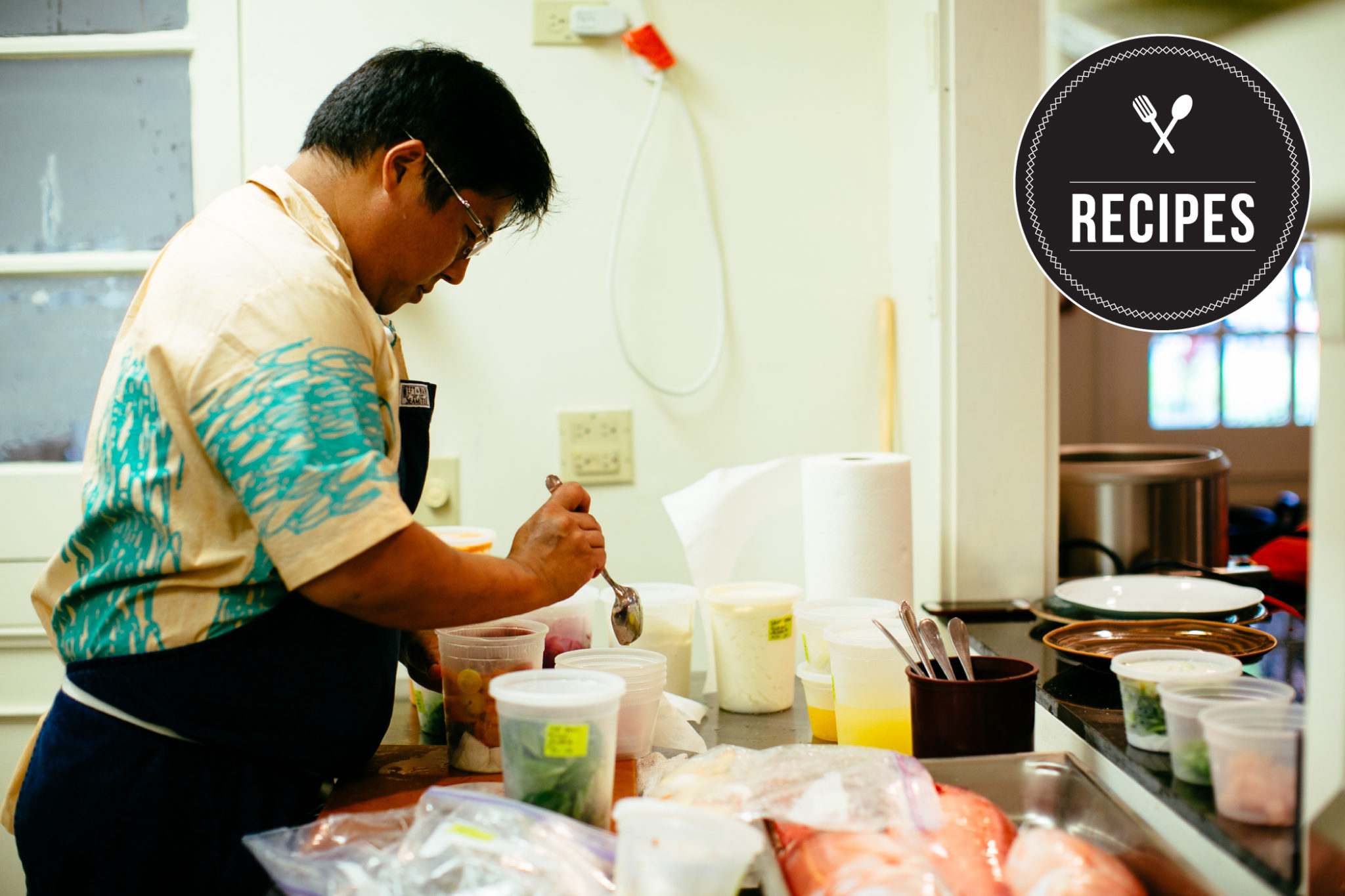For years after Hawai‘i Regional Cuisine exploded into the mainstream in the early 1990s, the snapper, with its delicate flavor and moist texture, became something of the de facto fish of Hawai‘i.
Premium varieties like onaga (long-tail red snapper) and opakapaka (pink snapper) appeared on fine-dining menus across Hawai‘i, the most-oft method of preparation being—you guessed it—steamed with ginger and soy, encrusted in macadamia, or baked in salt.
But as demand for snapper grew and overfishing led to the inception of regulated seasons, restaurants began importing the fish from places like Tonga.
“So I stopped eating it,” says Mark Noguchi, owner of newly opened Mission Social Hall and Café, as well as Lunchbox, the café for Hawaiian Airlines. “The thing that bothered me was that onaga and opaka were scarce in Hawai‘i, so now we’re just going to go take another person’s resource?”
It’s this kind of thinking and adherence to responsible sourcing—a value ingrained in him from his time spent dancing hula on the Big Island—that has won Noguchi fans in the community (or could it be his endearing honey badger-esque ways?). Not to mention, his food is pretty tasty, too.
Due to steadying snapper populations, the Department of Land and Natural Resources opened the fishing season up, and fish like onaga and opakapaka can be reeled in all year long in Hawai‘i (though peak months span from October through March).
The season will remain open year-round unless populations start declining again. Noguchi, back on the opaka bandwagon, gets his fish delivered whole by local fishermen like Abe Jazmin, who regularly peddles his cooler full of fishy fare to local restaurants around the island.
While most people have only had opakapaka served cooked through, Noguchi insists it’s just as yummy served raw in a dish like a poisson cru, the Tahitian version of the Spanish ceviche (or “a fish salad,” according to Noguchi) characterized by its use of coconut milk.
“Though, I’ve had poisson cru made with canola oil and ketchup made by one of my Tahitian friends,” Noguchi says, “and it was really fucking good.”
As with all his recipes, Noguchi’s poisson cru incorporates the superfecta of flavors—hot, sour, salty, sweet. It is also defined by the same values, which are simplicity and local sourcing, that drive the dishes at Mission Social Hall.
Although his menu features straightforward items like sandwiches and salads, Noguchi emphasizes the importance of attention to detail, like, for example, making sure filling runs the length of the sandwich. “Little shit like that is important to me!” he practically shouts.
Noguchi cut his teeth in such fine-dining establishments like Greenbrier Resort in West Virginia, the Kona Village Resort, Chef Mavro, and Town Restaurant, but he couldn’t be happier with the pace of his life now.
“Everyone always asks me, ‘Don’t you wish you had a real restaurant?’” he says. “I love fine dining … but I also know this is my calling, just accessible food.”
Mission Social Hall and Café is located at 553 S. King St. (inside Mission Houses Museum) and is open for lunch Tuesday through Saturday.

Opakapaka Poisson Cru
SERVES: 4–6
INGREDIENTS:
1 lb. fresh opakapaka, diced (fish can be substituted with almost any fresh catch)
1 can coconut milk
2 kaffir limes, bruised
1 stalk lemongrass, chopped and bruised
1 jalapeño, deseeded and roughly chopped
1 Hawaiian chili pepper, deseeded and minced
1 local orange, peeled, half segmented, rest juiced
1 local lemon, juiced, mix with orange juice
1 Tbsp. negi (green onion), sliced paper thin, soaked in ice water 5 min.
1 Tbsp. sweet onion, sliced paper thin, soaked in ice water 5 min.
4 Tbsp. cucumber, diced
1 Tbsp. mint, torn
1-2 Tbsp. extra virgin olive oil
Salt and fresh cracked pepper
PREPARATION:
1. In a small sauce pot, combine coconut milk, kaffir lime, lemongrass, and jalapeño. On low heat (do not let boil), reduce by half. Strain and cool.
2. In a large bowl, mix fish, Hawaiian chili, cucumber, orange segments, negi, sweet onion, and extra virgin olive oil.
3. Dress with coconut milk and citrus juice. (Don’t add all, just adjust for taste. You will have leftovers that can freeze or keep for a week in the refrigerator.)
4. Season with salt and pepper, add mint, and serve immediately with a salad.


